F.E. Coles the athlete
(1890s)
F.E. Coles the Athlete
“Bicycles were the iPhones of the 1890s. Everybody had to have one.”
-Jeff White, Elgin Antique Collector.
While it is not known whether F.E. Coles was fortunate enough to have owned a bicycle [mass production made the average cost of a bike $75 (~$2,000 in current dollars)], we do know that he competed in bicycle races in high school at the De La Salle Institute and as an alumnus, and while he worked for Mandel Brothers, a prominent dry goods store. In one instance he was referred to as part of a group of “well-known and popular riders”.
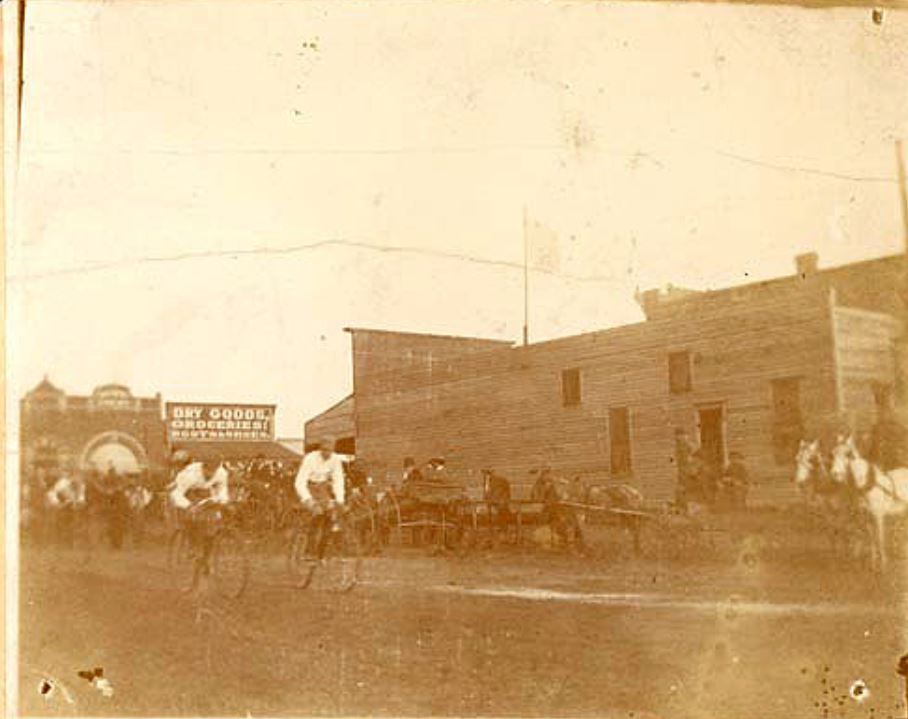
De la salle institute & Mandel bros.
In 1894, while a student at De La Salle Institute in Chicago, F.E. Coles came in fourth place in a one-mile bicycle race. He returned in June 1896 to race with other De La Salle alumni in a three-mile race.
Three months later, in August 1896, he participated in a 5-mile road race sponsored by his employer, Mandel Brothers (a prominent dry goods store). Entries to the road race were confined to men employed by Mandel Bros. and F.E. Coles was one of the racers.

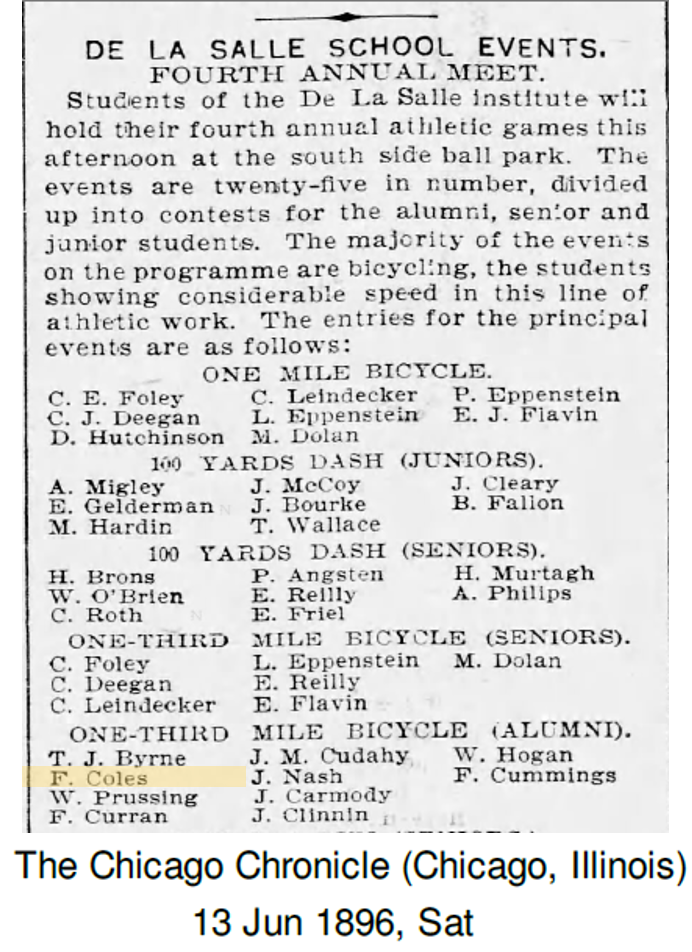

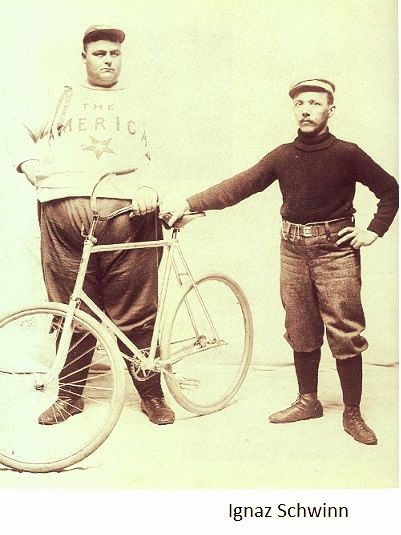
golden age of cycling in chicago
The invention of the “safety” bicycle (essentially the same design of present-day bicycles) began replacing large wheel bikes, which were cumbersome, heavy, dangerous and very expensive. The new design, a more affordable option, ushered in the start of what is referred to as “the golden age of cycling”. Hundreds of bicycle manufacturers sprang up around the country, and a high number of them were located in the Chicago area. Of particular note, in 1895, a German immigrant with a now familiar name, Ignaz Schwinn, and meatpacker Adolph Arnold formed Arnold, Schwinn & Co to manufacture bicycles. Schwinn later built his home at Palmer Square, the site of the Mandel Brothers road race.
By the late 1890s the Chicago area had 54 bicycle clubs boasting more than 10,000 members. Clubs even built ornate buildings with gymnasiums so members could exercise in the winter. The Chicago City Directory listed 300 manufacturers whose principal product was bicycles, and by 1898, the Fair Department Store was selling 1,000 bikes a day from its massive store on State Street.

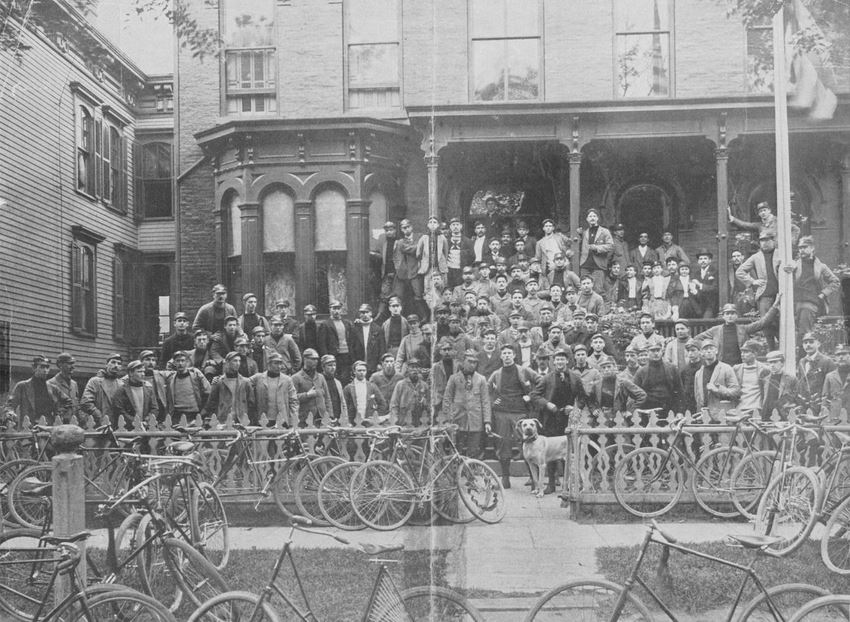
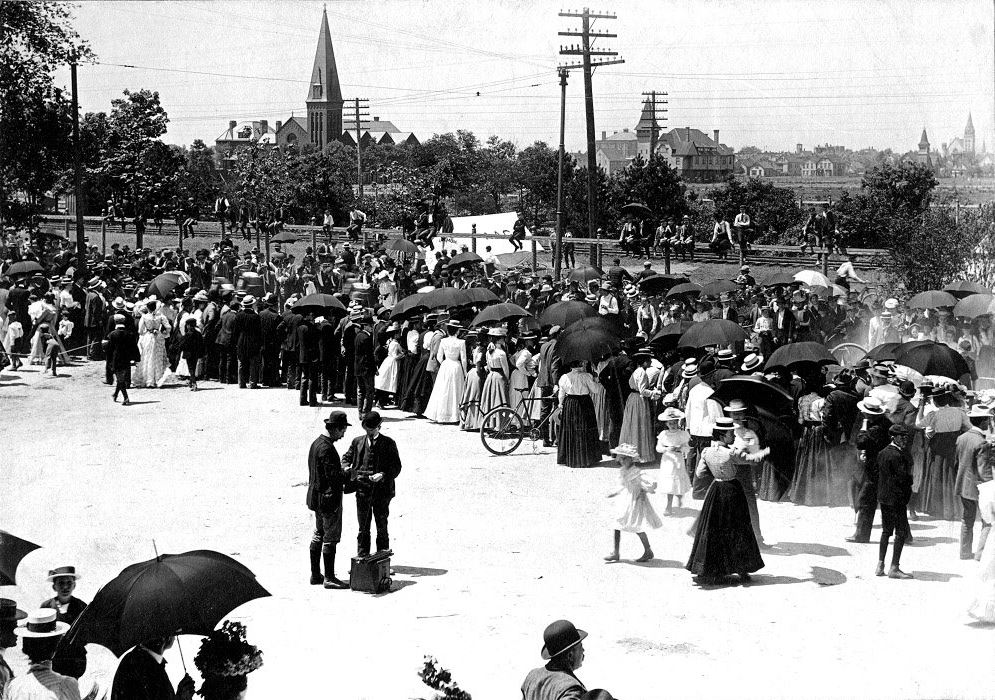
Road races were a really big deal
In 1891, the 15-mile Pullman bicycle race attracted as estimated 100,000 spectators. It’s understandable that a large retail concern like Mandel Bros. saw the value in sponsoring a race that would likely attract a few thousand people. F.E. Coles was listed as one of the principal promoters of the race, along with five other riders, all of whom were “well-known and popular riders”. I can imagine that once it was realized that several notable cyclists were in their employ, they could restrict the entrants to employees only and gain even more attention.
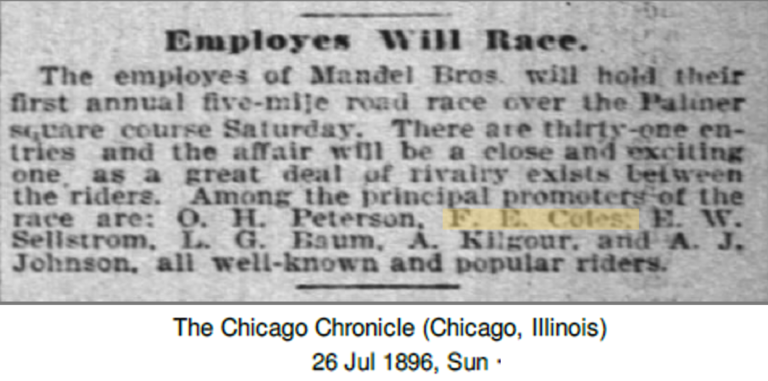
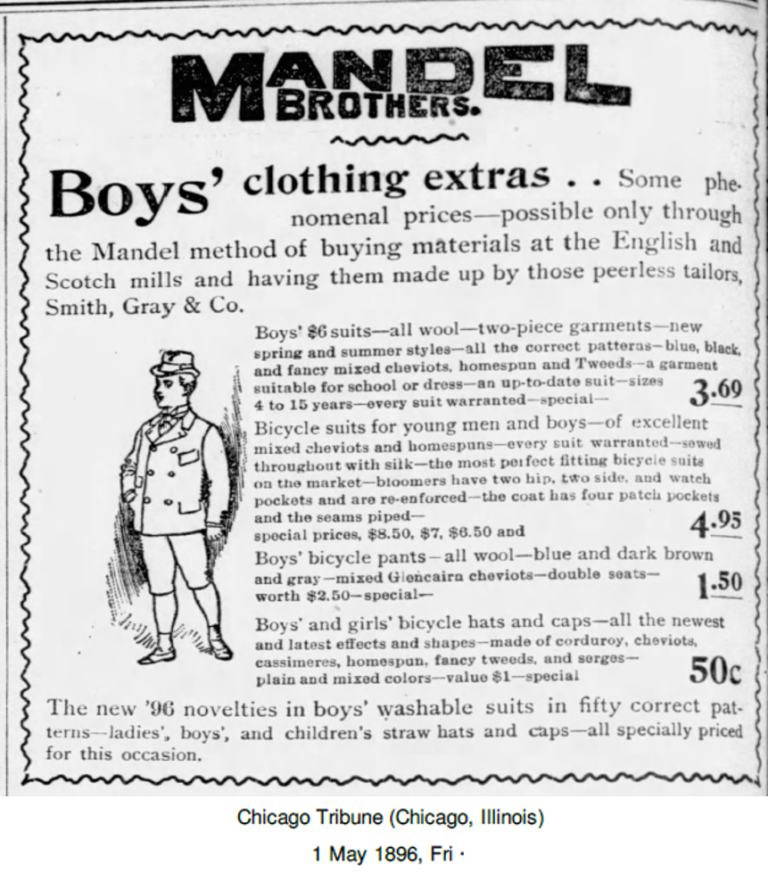
tally-ho coaches
Mandel’s sponsored race attracted substantial prize donations from several firms. The company engaged what they called “tally-ho” coaches for the event. At first I thought this was some kind of racing team coach who cheered from the sidelines. A little research put the kibosh on that interpretation!
A tally-ho coach was a familiar sight in the late 19th century. An open stagecoach, it was drawn by a team of four or six horses, usually wrangled by a driver and his assistant. Some models had a cabin where people could sit, but most tally-ho coaches had open seating on top of the coach. They were heavy – over two tons – and could hold about 25 people. The coaches were typically used for leisure travel and passengers were from the upper crust of society. As “coaching” became popular, people who could not afford to ride, often lined the streets to watch the sometimes ornately decorated coaches and passengers pass by.
It’s likely that some of the more wealthy spectators arrived on the tally-ho coaches and then observed the road race from their lofty perches, much like observers at a Thanksgiving Day football game at Marshall Field in 1895.
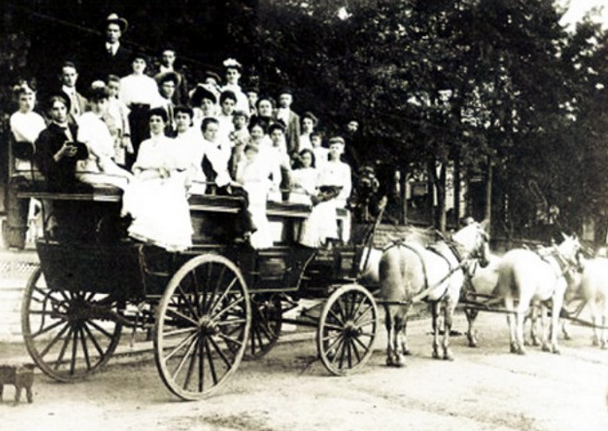


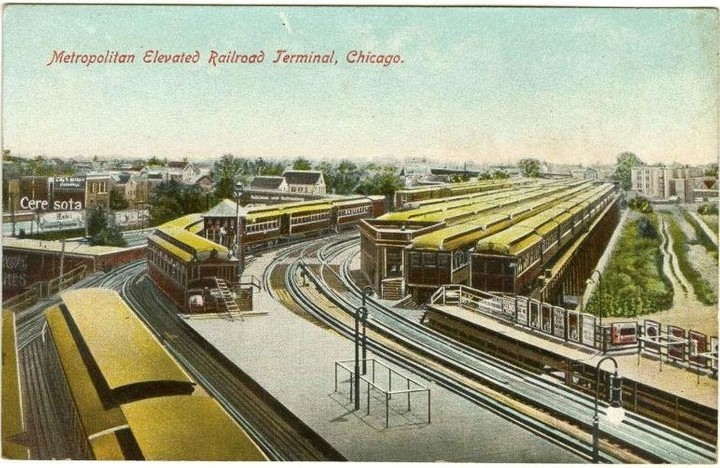
Mandel road race at palmer square track
The race was held at the Palmer Square track, which was not actually a track, but rather a route around a 7-acre rectangular park. Palmer Square Park, in the Logan Square neighborhood, is part of Chicago’s Emerald Necklace, the 28 miles of boulevards and parks encircling the city. It was connected by one of these boulevards to the larger Humboldt Park to the south, so Palmer Square was often the locale of bicycle races and parades. Palmer Square became a popular spot for “wheelmen” (local and national bicycle clubs). The oval-shaped road around Palmer Square was paved and it was perfect for cyclists. In 1895 the Metropolitan Elevated Railway began running trains from the Loop to Logan Square, establishing this area as an important destination and transfer point.
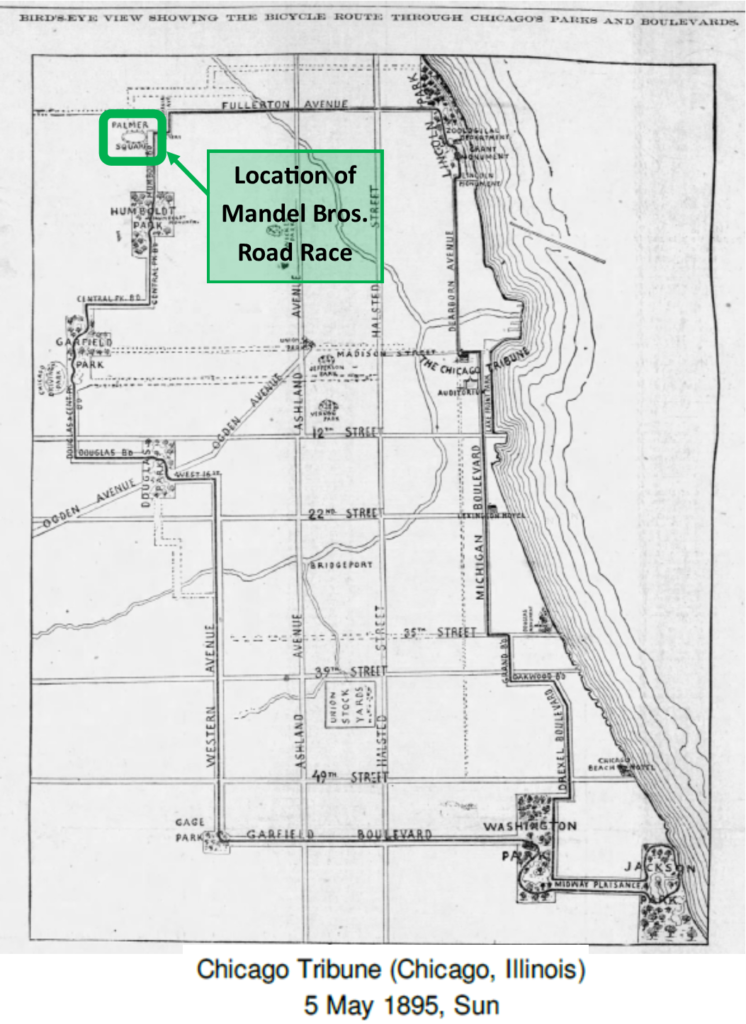
F.E. coles takes fourth place
Mandel Bros. fielded a team of 27 bicycle racers and they carefully handicapped riders to ensure the race would be hard-fought. F.E. Coles placed fourth.
Four years later, Frank moved to Bisbee, Arizona, seeking fame and fortune. The change in locale must have been somewhat of a shock. Bisbee’s population was around 8,000 and its roads were primarily dirt. Conversely, Chicago’s population was 1.7 million and it already had miles of paved roads and bike paths.

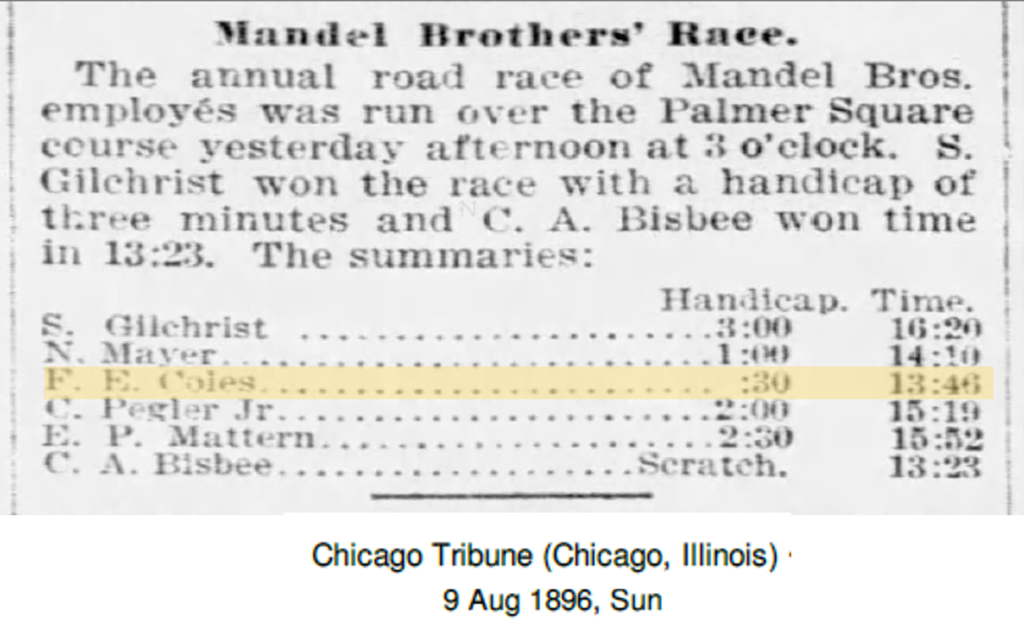
sources
(June 17, 1894). “De La Salle Athletes in the Field”. Chicago: Chicago Tribune
(May 5, 1895). “Birds Eye View of Bicycle Route Through Chicago’s Parks and Boulevards”. Chicago: Chicago Tribune
(May 1, 1896). “Mandel Brothers Display Advertisement”. Chicago: Chicago Tribune
(June 13, 1896). “De La Salle School Events Fourth Annual Meet”. Chicago: Chicago Chronicle
(July 26, 1896). “Employees Will Race”. Chicago: The Inter Ocean
(July 26, 1896). “Employes of Mandel Brothers Will Hold First Annual Road Race”. Chicago: The Chicago Chronicle
(August 8, 1896). “Mandel Bros.’ Employees”. Chicago: The Inter Ocean
(August 8, 1896). “Dry Goods Men to Race”. Chicago: The Chicago Chronicle
(August 9, 1896). “Mandel Brothers’ Race”. Chicago: Chicago Tribune
Cox, Michelle (2015). “Palmer Square – Home of Chicago’s Elite and Bicycle Mecca”. Chicago: Novel Notes of Local Lore
Gathman, Dave (June 26, 2015). “Biking part of Elgin’s long history”. Elgin: Elgin Courier-News
Hobbs, Allyson (2005). “Bicycling”. Chicago: The Electronic Encyclopedia of Chicago
Pallardy, Richard (2018). “Radlers in Logan: Ignaz Schwinn and the Rise of Cycling Culture”. Chicago: LoganSquarist
Racerpat (2006) “picture (and caption) pullman bicycle race”. Chicago: Chicago Track Bicycle Racing History Blog
Spellen, Suzanne (2019). “A Decoration Day Disaster: The Grisly 1897 Tally-Ho Accident”. Brooklyn: Brownstoner LLC
Sweet, Chris (2016) “The Early History of Cycling in Illinois”. Bloomington: Illinois Wesleyan University